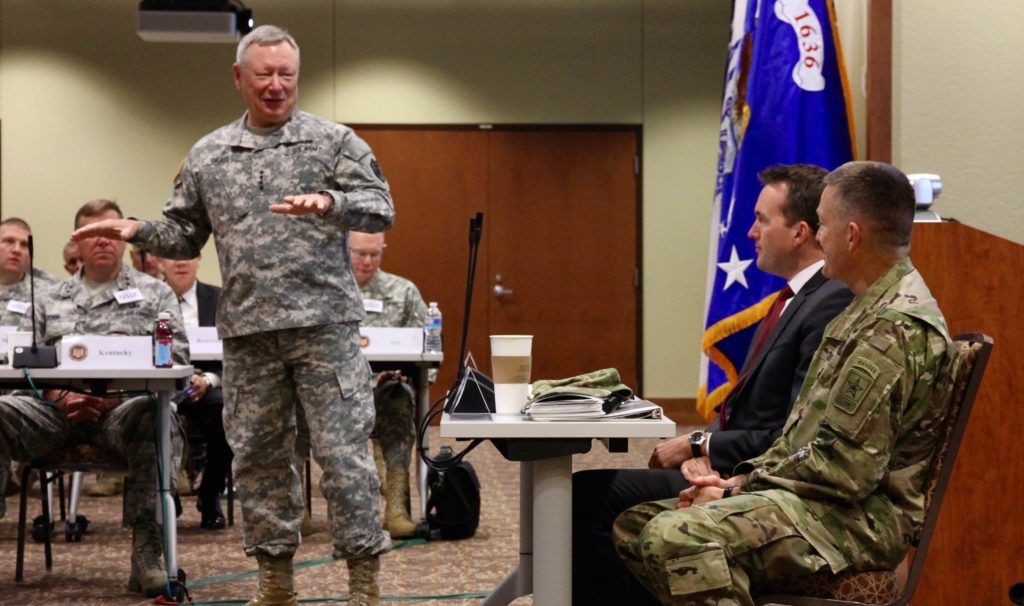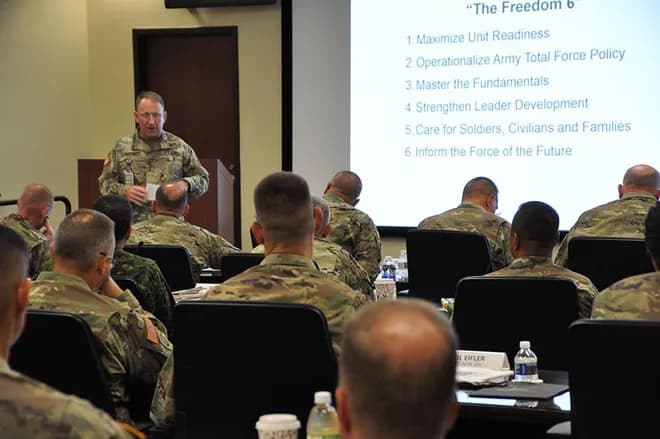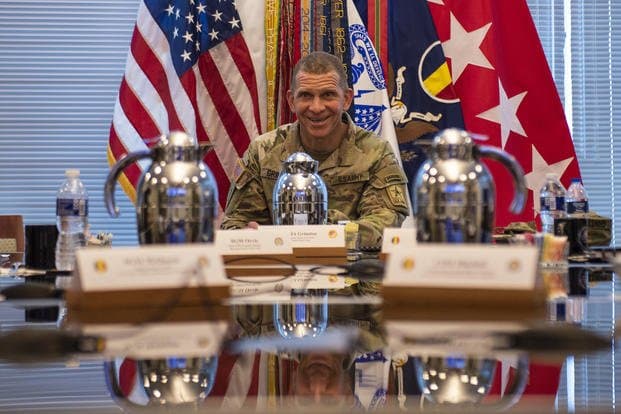Not only does senior leadership help in achieving the goals of the Army, but it also helps to ensure the well-being of the soldiers. This is especially true if the Army can implement the six basic leadership styles that all members of the Army follow.
Army senior leadership is a vital component of the educational system of the United States Army. It is essential to ensure that every Soldier has the opportunity to reach his or her full potential.
Leadership training provides a variety of opportunities for Soldiers to develop the skills necessary to lead others in a successful and ethical manner. These include tactical and operational skills, teamwork, strategic planning, and communication courses. The Army’s leadership development programs cover various levels of enlisted and officer ranks.
A new selection process for battalion commanders was introduced last year. Candidates are evaluated on cognitive, communication, and physical fitness tests. Following this, candidates are ranked by their cumulative score from the BCAP assessment.
Candidates also received extensive peer feedback and a cognitive talent assessment. As a result, the Army’s Battalion Commander Assessment Program (BCAP) was the most thoroughly vetted class of battalion leaders ever. This is the first class of officers under the new system who will assume commands in the coming year.
While the Army’s new process includes a number of measures to mitigate bias, the Army must continue to work to improve the accuracy of its executive leader choices. In addition to improving the selection process, the Army must reexamine how it assigns people based on seniority.
In order to prepare for a future of uncertainty, the Army must make significant changes to its personnel management system. One way to do this is to encourage junior officers to gain experience in more challenging roles.
To do this, the Army has introduced several leadership training courses. Those at the E-7 Sergeants First Class level teach tactical skills and the ability to lead.
Those at the command sergeant major rank can take courses that prepare them for the battalion and brigade-level positions. Training includes topics such as intergovernmental situations, teamwork, leadership, and mentoring.
Soldiers who plan to serve in the Army for at least six years must attend leadership school courses. Each year, about 1,900 candidates are considered. However, some senior officers have been proven unfit for leadership.
What Are Army leadership styles?

As a Soldier, you deserve to have a leader who helps you reach your goals. Whether you are training to be a commander or just looking for a new job, the Army has a variety of leadership styles that can help you get the most out of your career.
Emotional leadership combines balance with passion. These leaders inspire their followers to achieve great things. They motivate through reward and punishment. However, this style of leadership may not be ideal for every situation.
Servant leadership is a powerful tool that focuses on developing relationships with subordinates. It is also a means of building a motivated team. Using a servant leader can improve your team’s morale, reduce attrition, and develop future leaders.
Transformational leadership is a broader concept that involves directing positive changes within a group. This is a form of leadership that works best in changing environments. The transformational leader is emotionally intelligent, has good communication skills, and is willing to empower others to reach their potential.
The Army’s Leadership Requirement Model breaks with the academic literature in that it uses the word requirements 30 times. This is a sign that the US Army is taking a different approach to leadership.
While there is no ‘perfect’ leadership style, certain traits are universal to any leadership style. Among these are self-confidence, steadfast commitment, and decisiveness.
While many people believe that leadership is a mystical quality that is not measurable, in reality, leadership is an innate ability. Taking the time to learn how to lead well can be an invaluable asset for any organization.
For example, if a leader is able to successfully apply a new leadership style, his or her subordinates will see a significant improvement in morale, and morale translates to increased performance. That’s not to say that leaders must always have positive energy, but it is important to show support and encouragement for their subordinates.
If you are an employee and working under an autocratic leader, you could become dependent on your supervisor and ineffectual in your own business.
What are the two types of military leadership?

You’re not alone if you have ever wondered what Army senior leadership is. The military has struggled with toxic leadership for years. In response to the issue, the Army is implementing several new initiatives.
First, the Army is pursuing a broader approach to recruiting and selecting candidates. Rather than relying on experience-based selections, the Army is shifting to a selection framework that assesses character and potential. This will ensure that the Army reflects the nation that it serves.
Second, the military is incorporating the best of public and private sector talent management ideas into its selection process. For example, the Battalion Commander Assessment Program (BCAP) gives the Army the most meticulously vetted battalion leaders.
The BCAP program includes extensive peer evaluations. Candidates also undergo cognitive, behavioral, and physical fitness tests. These assessments are designed to measure a variety of skills, including teamwork, leadership, and ethical leadership.
Another important aspect of the selection process is that it includes a review of performance evaluations. This was a significant shift from the Army’s previous selection procedure, which focused on 90-second file reviews.
Finally, the military is making strides to increase the diversity of its ranks. For example, the military recently revamped its battalion commander selection process. While the Army has long chosen battalion commanders based on their rank, it is now using the most rigorous process to identify candidates that are a good match for the job.
The new selection process is part of a broader effort to improve diversity and to make executive leadership choices more valid. As the first class of officers under the new system assumes command in the coming year, the lessons of the BCAP will be useful for any organization.
While the Army’s new selection process is not perfect, it offers important lessons that can be applied to other organizations. It provides valuable information about panelists and gives candidates a chance to gain perspectives.
Ultimately, the military is committed to increasing the diversity of its leadership ranks. To do so, it will continue to develop its leadership development programs.
The Army has recently revised its doctrine regarding Mission Command. This new doctrine describes the principles that must be adhered to by leaders to be successful. There are seven main principles.
These are: Decisiveness, Creating a Shared Understanding, Providing Clear Commander’s Intent, Accepting Prudent Risk, Embracing Disciplined Initiative, Using Mission Orders, and Building Cohesive Teams Through Mutual Trust. All seven are critical to success in today’s military.
A leader’s responsibility is to develop trust with subordinates. By providing clear and accurate mission orders and creating a shared understanding of the commander’s intent, subordinates will feel confident to exercise disciplined initiative.
Leaders must learn to assess situations quickly and accurately. They must also know when and how to delegate and consult. If they are indecisive or hesitate, they create hesitancy and confusion among subordinates.
As a result of these leadership principles, the subordinates will be able to make the best decisions. Having the confidence to make these decisions will give them an advantage when they are fighting future tactical battles.
Taking care of team members is a fundamental principle for all leaders. It involves creating a safe environment, focusing on wellness, and developing team members. When leaders focus on these things, they will create an atmosphere where everyone is willing to work together as a team.
Changing the Army’s culture will take a concerted effort from commanders. This will require training, deliberate effort, and a commitment to building trust among subordinates. However, the future battlefield will likely feature small units that are dispersed and disconnected. Hence, leaders must prepare their forces to win these battles.
These seven principles have been the focus of the Army’s new doctrine. Ultimately, they are the Army’s approach to command and control. By committing to them, leaders will ensure that their forces will be prepared for the battles of tomorrow.
Developing leaders is a core function of every military organization. When leaders set high standards, they set the bar for performance. Whether leaders are in the field or in office, they must know when to make the right decision.
